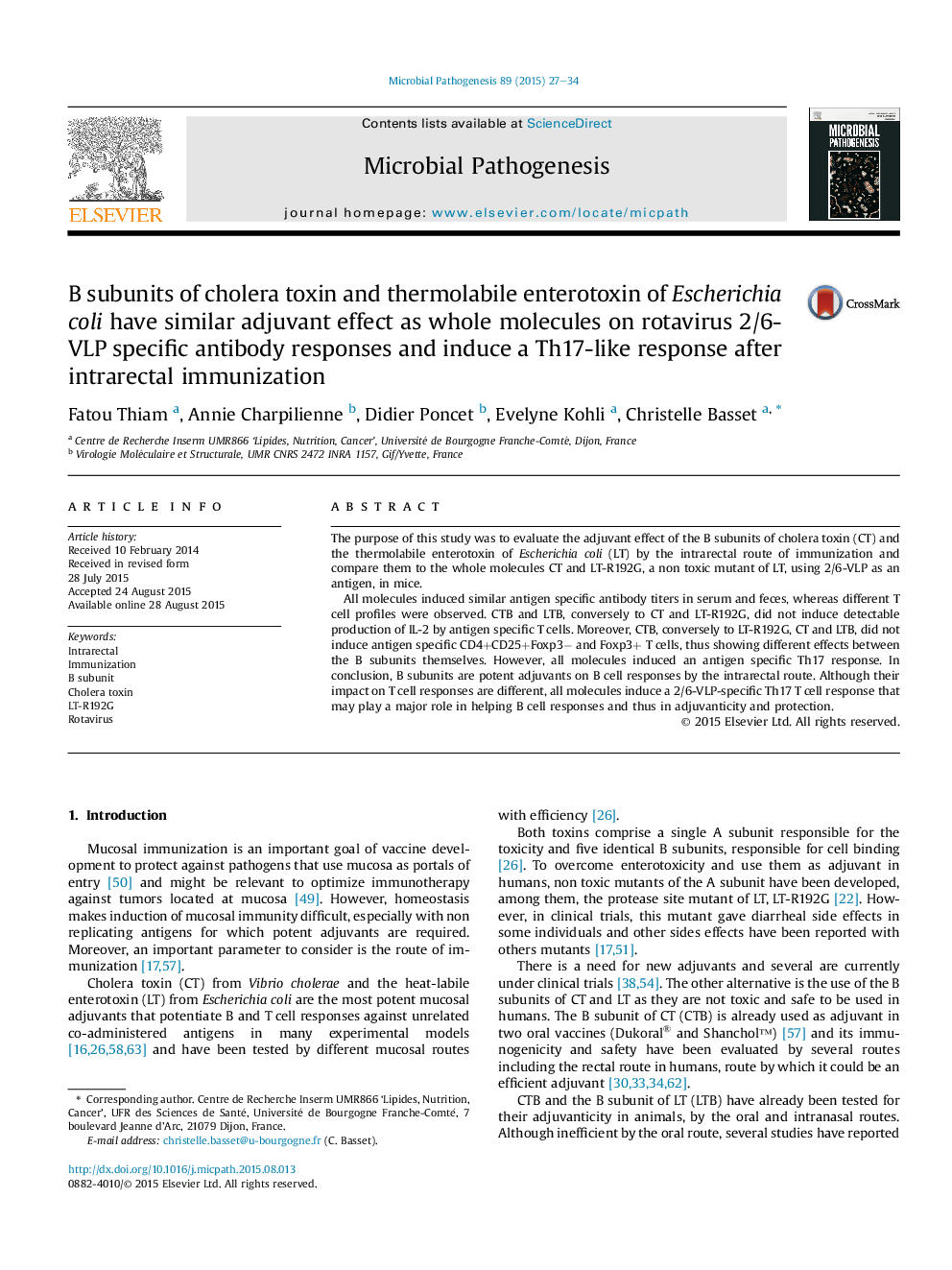| Article ID | Journal | Published Year | Pages | File Type |
|---|---|---|---|---|
| 3416440 | Microbial Pathogenesis | 2015 | 8 Pages |
•CTB and LTB induce 2/6-VLP specific antibody responses similar to CT and LT-R192G.•LT-R192G and CT but not their B subunits induce antigen specific IL-2 production.•LT-R192G, CT and LTB induce antigen specific CD4+CD25+Foxp3− and Foxp3+ T cells.•LT-R192G, CT and their B subunits all induce antigen specific Th17 response.
The purpose of this study was to evaluate the adjuvant effect of the B subunits of cholera toxin (CT) and the thermolabile enterotoxin of Escherichia coli (LT) by the intrarectal route of immunization and compare them to the whole molecules CT and LT-R192G, a non toxic mutant of LT, using 2/6-VLP as an antigen, in mice.All molecules induced similar antigen specific antibody titers in serum and feces, whereas different T cell profiles were observed. CTB and LTB, conversely to CT and LT-R192G, did not induce detectable production of IL-2 by antigen specific T cells. Moreover, CTB, conversely to LT-R192G, CT and LTB, did not induce antigen specific CD4+CD25+Foxp3− and Foxp3+ T cells, thus showing different effects between the B subunits themselves. However, all molecules induced an antigen specific Th17 response. In conclusion, B subunits are potent adjuvants on B cell responses by the intrarectal route. Although their impact on T cell responses are different, all molecules induce a 2/6-VLP-specific Th17 T cell response that may play a major role in helping B cell responses and thus in adjuvanticity and protection.
Graphical abstractFigure optionsDownload full-size imageDownload as PowerPoint slide
